Crepe – crêpe (textile) is a wool, silk, or synthetic fabric which has a distinctive bumpy and wrinkled appearance. Crêpe (textile) derives from a French word, which refers to a thin, small pancake. It is normally a lightweight to medium-weight fabric, but ultimately crepe can be of any weight. Crepe fabric can be used to make clothes such as suits, pants, dresses and blouses, and more. It is also popular in home decorative materials such as window treatments, pillows, and curtains. In this article, we are telling you about the different types of crepe fabrics.
Conventionally, this fabric was worn by ladies during the times of mourning or funeral in many western societies, but this system has gone out of style. Various societies throughout the world incorporate various types of crepe fabrics into their textile generation, and in some circumstances, conventional crepe fabric is still employed that has been created the same way for several years.
What is crepe fabric?
Crepe is a unique rippling and three-dimensional texture that is made by weaving or using fabric treatment method. So garments made using crepe fabric are quite delicate and are used for ceremonial purposes. Crepe fabric was mostly used in western culture during mourning but now it is out of fashion. There are different types of crepe fabrics namely wool crepe, aerophane, Crepe de Sante, Crepe Anglaise, and many others that will be discussed later.
What are the various types of crepe fabric?
The type of crepe fabric is identified by a puckered, crinkled or pebble-like surface. This surface with yarn is highly twisted in the weft and warp. The fabric is made with a plain weave. Another thing to note is that this crinkled texture found in this fabric can be both rough and smooth. It is woven from all kinds of major fibres which can be natural or man-made.
1. Crepe de Chine:
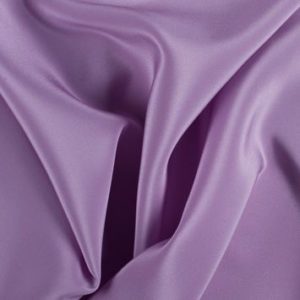
It is a lightweight fabric mainly made from silk. Silk crepe de Chine textile doesn’t have a wrinkled or crinkled exterior, standard of other crepes; as a substitute, the silk fabric has a sleek, matte finish with slight pebbling. This look is achieved by utilizing tightly twisted threads as weft yarns in a plain weave pattern. Polyester crepe de chine is a more cost-effective version with a look-alike appearance and feels to the silk fabric.
2. Polyester Crepe
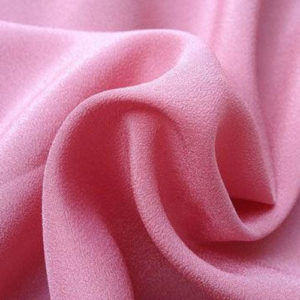
This material is a type of crepe material that is created utilizing synthetic fiber polyester. Poly crepe is usually a lightweight, thin fabric that has a nice drape. This crepe is applied for skirts, dresses, and blouses. It sometimes includes elastane to create a stretch crepe.
3. Crepe Georgette
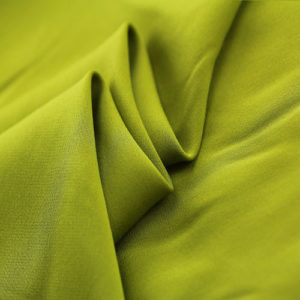
This fabric has a softer and smoother appearance and is mainly made from synthetic silk-like fibers such as rayon or silk. Silk georgette has limited flexibility and is a great-looking drape. Crepe georgette fabric is a famous fabric for dresses.
4. Canton crepe
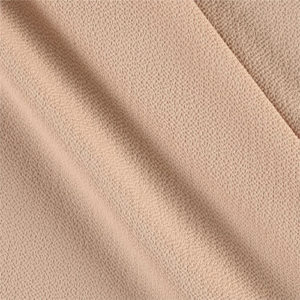
It was created of silk from canton province in china, which is where the name arrives from. It is very alike to crepe de chine in appearance but is a bit bulkier as the fill yarns in the weave are considerably heavier.
5. Wool crepe
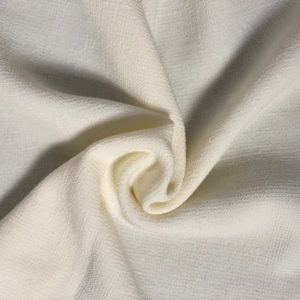
Wool crepe has a vibrant and more irregular surface and is designed from wool fabric and seldom cotton or synthetic fabrics. It is a light to medium weight crepe; it resists wrinkling and is frequently used for pants, dresses, and suits.
6. Crepe back satin
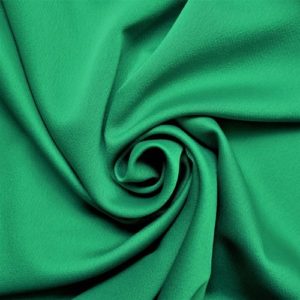
It is a satin fabric where one side is soft and smooth, and the other side is crinkled with a crepe appearance and feel.
7. Crepe charmeuse
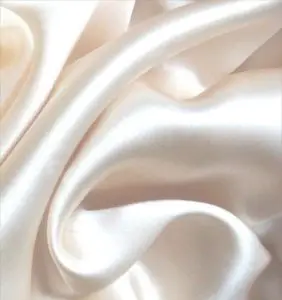
It is a silk fabric that is constructed applying the satin design method with crepe twist fibers. It is reflective and smooth such as satin, with a dull back. The crepe threads provide the fabric with trademark crepe clarity.
8. Plisse crepe:
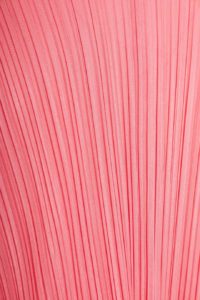
It is derived by chemically treating the fabric to achieve the crinkled and puckered appearance, making a folded pleat. A portion of the fabric is either covered in a wax pattern and dipped in an alkaline solution or pressed with hot rollers to create the pattern. The areas uncovered by wax will essentially shrink, and when the wax is detached, the fabric will be intentionally wrinkled.
9. Aerophane
Famous during the mid 19th century, this type of crepe has a distinguishing gauze-like texture. Although it isn’t in production anymore, many types of modern crepe imitate attributes of this classic well-known textile.
10. Baute Satin
This crepe fabric includes warp weaving with a reversed plain crepe design. It is a famous French crepe variety that’s still widely used today.
11. Crepe Anglaise
This white and black crepe variety was once synonymous with the rural English lifestyle. In terms of business and warfare, Brits and Franks would often interchange cultural artifacts such as crepe weave descendants.
12. Crepon
It is typically produced from heavier fabric, and this uncommon crepe was the backbone of the late 19th century.
How is a crepe made?
A huge variety of various processes might be applied to make the base textiles utilized in crepe fabric. The only different quality of this type of textile is its weave, so whether it’s synthetic or natural fibers, textile and designers manufacturers have found a myriad of various ways to make an effect that can be agreed upon as being “crepe.”
Crepe yarn is created with a method identified as hard twisting, which comprises twisting the textile fibers utilized in fiber manufacture much firmer than typical. In addition, alternating “Z” and “S” twists are employed to give the yarn its distinguishing bouncy texture. The alternating spinning techniques, or the so-called right-hand and left-hand twists, result in crepe yarn no matter which fabric material is utilized.
After the crepe yarn has been produced, it may be dyed, treated, and then spun into garments. In some scenarios, the manufacture of finished crepe products might occur at the same facility where the yarn is spun, but usually, the work is split among two separate firms.
How is crepe fabric utilized?
Because of its delicate nature, crepe fabric is usually utilized in eveningwear, scarves, and other lightweight types of clothing. Wool crepe is more permanent than silk crepe, which suggests that it can be appropriated for more heavy-duty apparel purposes like dress attires and sweaters.
Synthetic crepes might be further long-lasting in quite a few forms but keep in mind that almost all synthetic materials are extremely flammable, whereas natural fibers are fire-resistant particularly wool. Crepe fabrics created from wool and silk are also more pleasant.
One of the most public applications of crepe fabric is in dresses. This fabric drapes beautifully over other textiles, and it clings to the body in what is commonly thought of as a graceful and attractive way. Every day ordinary dresses, even though they usually don’t receive crepe treatment. This elegant fabric is typically worn for weddings, galas and high fashion photoshoots, and other similar high-class events.
How do you take care of Crepe fabric?
A crepe fabric can be created in a variety of different ways from many types of fibers, and it is very crucial to follow the care instructions of your household item and garment. Most crepe fabrics will shrink significantly when washed in a washing machine, and it needs to be dry cleaned. In some rare cases, crepe can be washed by hand in cold water and then laid flat to dry.
So, through this article, we can see that crepe fabrics are very useful, and the various types of crepe fabrics are used in various garment products or home décor items.
What is crepe fabric called?
Crêpe (textile), also spelled crepe or crape (from the French crêpe) is a silk, wool, or synthetic fiber fabric with a distinctively crisp and crimped appearance. The term “crape” typically refers to a form of the fabric associated specifically with mourning. Crêpe was also historically called “crespe” or “crisp”.
What is crepe fabric best for?
Due to its delicate nature, crepe fabric is generally used in scarves, eveningwear, and other lightweight types of clothing. Wool crepe is more durable than silk crepe, which means that it can be used in more heavy-duty clothing applications like sweaters and dresses.
What is heavy crepe fabric?
Crêpe, commonly spelled crepe, is a luxurious fabric that was traditionally made from silk but can now be made from almost any fiber. Crepe types vary from thin and lightweight to thick and heavyweight. Most crepe fabrics have a beautiful drape and are popular for evening gowns, suiting, and home decor.
What is the difference between crepe and chiffon?
Because of its slippery quality, chiffon is difficult to cut and sew. A fabric characterized by a crinkled, puckered, or pebbly surface with highly twisted yarns in the weft and sometimes in the warp or both. Crepe is usually made with a plain weave. The fabric is woven from all of the major fibers, natural or man-made.
Is polyester crepe good for summer?
The crepe as a fabric is not suitable for summer usage. Even though it is light clothing, it is a bad idea to wear it in summer. Crepe lends its properties to make winter clothes and clothing accessories.
Is crepe breathable?
Organic crepe fabric tends to be the most breathable amongst all its types. However, other fibers also offer enough ventilation, even when used in high temperatures. Moisture-Absorbing – Crepe fabric is also absorbent, making it ideal for use in warmer climates.
Which is better crepe or georgette?
Georgette sarees are suitable for both traditional occasions as well as for casual get-togethers. Crepe Silk is a luxurious fabric with a good sheen and smooth texture, woven by using high twist yarns. Crepe Silk drapes beautifully too and can be pleated easily.
Is crepe material soft?
Crepe fabric gives the wearer a slimming appearance and has a very graceful fall, making it a great fabric for party events or other formal occasions; however, crepe fabrics are also preferred for daily wear because they require little to no ironing and are very soft and comfortable.
Are crepe fabrics stretchy?
Yes, crepe fabric is stretchy.
Does crepe fabric wrinkle easily?
Crepe. “Fabric and wrinkles go hand in hand, but one of the best fabrics to work with is crepe,” says Johnson. It doesn’t wrinkle easily, but if it does, you won’t notice them quite so much because crepe naturally has a somewhat crinkled surface.
Is crepe fabric easy to sew?
In my experience, crepe is a relatively stable fabric. Georgettes and poly crepes are especially stable and easy to sew with. That being said, the more lightweight the fabric, the more “shape-shifting” you’re bound to see. Silk crepe de chine or other lightweight crepes may “grow” or change shape after you’ve cut them.
What is triple crepe?
Triple crepe is a heavyweight polyester crepe fabric with a textured appearance and a slight give which makes this fabric drape and sew beautifully. It is perfect for dresses and skirts, and heavy enough even for trousers and jackets to take you through the winter months.
What is banana crepe fabric?
Just as you’d expect, banana fabric is fabric made from bananas. Just like hemp, which produces a flowering and a stem section, banana stems and peels yield fibers that can be made into textile products.
What is viscose crepe fabric?
Viscose or Rayon is what is known as a manmade fabric. Viscose crepe is a lovely quality viscose that will last well and sew beautifully. This fabric has lots of weight and drape to it. You can use this fabric to make wide floaty trousers, pretty blouses, or vintage-style tea dresses.
